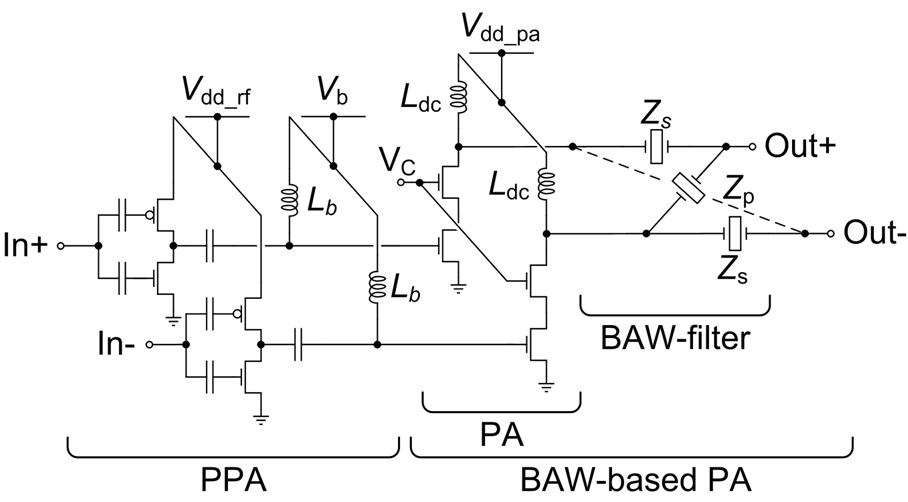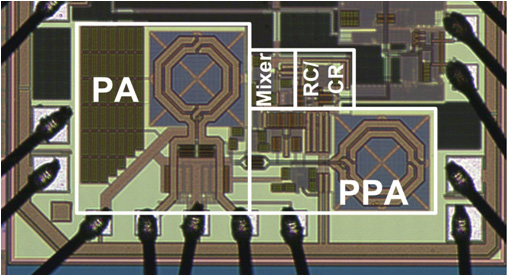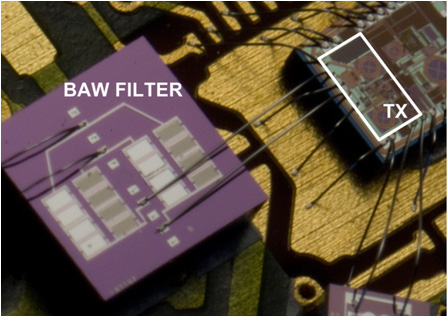This research is part of the nanotera.ch project Platform Circuit Technology Underlying Heterogeneous Nano and Tera Systems (PlaCiTUS).
 |
 |
| PA schematic | PA IC |
 |
|
| BAW resonators connected to the PA chip | |
| A 2.4 GHz BAW-based Power Amplifier (PA) | |
This research aims at exploring the use of BAW resonators in the transmitter architecture, proposing a solution able to take full advantage of them. The main technical objective is to develop a transmitter for WSN multi-channel applications able to cover the whole 2.4 GHz ISM band and enable the compatibility with wide-spread standards like Bluetooth and Bluetooth Low Energy. Typical transmissions should thus range from low data rates (typically tens of kb/s) to medium data rates (1 Mb/s), with FSK and GFSK modulation schemes, be centered on any of the channels provided by the just cited standards and cover a maximum range of some tens of meters. To reach these targets and circumvent the BAW oscillator limited tuning range, an upconversion transmitter using wide IF is used. The typical spurious problems related to this transmitter architecture are addressed by using a combined suppression based on SSB mixing and selective amplification. The latter is achieved by co-integration of the power amplifier with BAW resonators, which allows performing filtering of the spurious while preserving the amplifier efficiency. The frequency synthesis section uses a fractional division plus LC PLL filtering and further integer division to generate the IF signals and exploit the very-low BAW oscillator phase noise.
The transmitter has been integrated in a 0.18 μm standard digital CMOS technology. It allows addressing the whole 80 MHz wide 2.4 GHz ISM band. The unmodulated RF frequency carrier demonstrates a very-low phase noise of −136 dBc/Hz at 1 MHz offset. The IF spurious are maintained lower than −48 dBc, satisfying the international regulations for output powers up to 10 dBm without the use of any quadrature error compensation in the transmitter. This thanks to the rejection provided by the SSB mixer and the selective amplifier, which can reach drain efficiencies up to 24% with integrated inductances, filter losses included. The transmitter consumes 35.3 mA at the maximum power of 5.4 dBm under 1.6 V (1.2 V for the PA), while transmitting a 1 Mb/s GFSK signal and complying with both Bluetooth and Bluetooth Low Energy relative and absolute spectrum requirements.